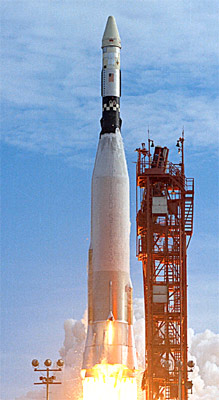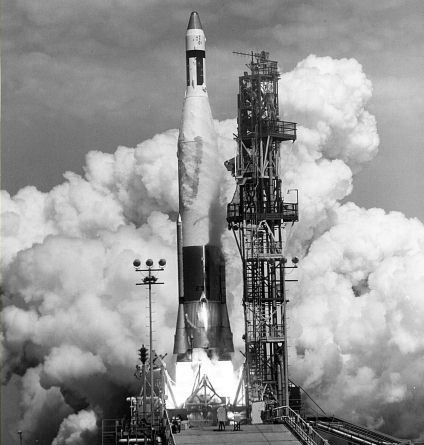
The primary mirror reflects the light through an opening in the flat mirror and through a Ross corrector. In the strip camera the ground image is reflected by a steerable flat mirror to a 1.21 m (4 ft 0 in) diameter stationary concave primary mirror. The Camera Optics Module of KH-7 consists of three cameras: a single strip camera, a stellar camera, and an index camera. For the KH-7, the DCM is also called the Camera Optics Module (COM), and is integrated in the OCV, which has a length of 5.5 m (18 ft) and a diameter of 1.52 m (5 ft 0 in). optical reconnaissance satellites in the 1960s: the Orbital (or Orbiting) Control Vehicle (OCV), the Data Collection Module (DCM), and the Recovery Section (RS). Ī feasibility study for the Geodetic Orbital Photographic Satellite System reveals three subsystems for U.S. After the improved KH-8 GAMBIT-3 satellite was developed during 1965, operations shifted to the larger Titan IIIB launch vehicle.Ī KH-7 GAMBIT in launch configuration on display at the National Museum of the United States Air Force in Dayton, Ohio.Įach GAMBIT-1 satellite was about 4.5 m (15 ft) long, 1.5 m (4 ft 11 in) wide, weighed about 523 kg (1,153 lb), and carried about 914 m (2,999 ft) of film. While CORONA used the Thor-Agena launch vehicle family, GAMBIT would be launched on Atlas-Agena, the booster used for SAMOS. GAMBIT emerged in 1962 as an alternative to the less-than-successful CORONA and the completely failed SAMOS, although CORONA was not cancelled and in fact continued operating alongside the newer program into the early 1970s. In particular, its overall success stood in sharp contrast to the two first-generation photoreconnaissance programs, Corona, which suffered far too many malfunctions to achieve any consistent success, and SAMOS, which was essentially a complete failure with all satellites either being lost in launch mishaps or returning no usable imagery. The report also stated that Gambit had provided the intelligence community with the first high-resolution satellite photography of denied areas, the intelligence value of which was considered "extremely high". In its summary report following the conclusion of the program, the National Reconnaissance Office concluded that the GAMBIT program was considered highly successful in that it produced the first high-resolution satellite photography, 69.4% of the images having a resolution under 0.91 m (3 ft 0 in) its record of successful launches, orbits, and recoveries far surpassed the records of earlier systems and it advanced the state of the art to the point where follow-on larger systems could be developed and flown successfully. Though most of the imagery from the KH-7 satellites was declassified in 2002, details of the satellite program (and the satellite's construction) remained classified until 2011. It achieved a typical ground-resolution of 0.61 m (2 ft 0 in) to 0.91 m (3 ft 0 in). Like the older CORONA system, it acquired imagery intelligence by taking photographs and returning the undeveloped film to earth. The total vehicle was capable of carrying a 5,000-pound payload to low-Earth orbit.BYEMAN codenamed GAMBIT, the KH-7 ( Air Force Program 206) was a reconnaissance satellite used by the United States from July 1963 to June 1967. The Model 8001 version burned JP-4 jet fuel while the Model 8048 version burned IRFNA/UDMH liquid fuel. The Bell engine was manufactured in two models for the Agena A. It employed a single-start Bell engine producing 15,200 pounds of thrust.



The Agena A was 19 feet, 4 inches long and 4 feet, 11 inches wide. Since the Agena A was designed to be tailor manufactured for each flight, it proved impractical and was never used by NASA. The Agena family of second stages originated in the Atlas-Hustler concept proposed by the U.S. The Atlas-Agena A was a two-stage rocket using the Atlas D missile as a first stage and the Lockheed Agena A as a second stage. Atlas-Agena A Launch, Photo Courtesy NASAĭate of First Cape Canaveral Launch: February 26, 1960ĭate of Final Cape Canaveral Launch: May 24, 1960


 0 kommentar(er)
0 kommentar(er)
